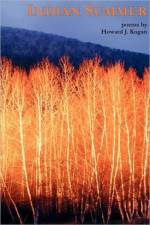- Oneonta's Forgotten Gem
av Jim Loudon
187
BOOK SUMMARY: In 1954, New York State Electric & Gas ceased operations at their Oneonta, New York hydro-electric power plant and drained a 50-acre pond known affectionately to area residents as "Electric Lake." Today, as motorists speed through Oneonta on I-88, only a stream remains of this largely forgotten gem of Oneonta's past. Once the primary recreational site of a bustling railroad town, Electric Lake provided area residents with boating, fishing, swimming, and other outdoor activities. The lake also lent its resources to electric power for NYSEG, the D&H railroad shops, and the Oneonta Trolley Line, and was the source of material for the Oneonta Ice Company in winter. Now almost completely reclaimed by the natural world, the grounds are still haunted by remnants of the dam, railroad trestles, and boat launches. Not without its share of tragic events, the story of Electric Lake has been recovered by author and historian Jim Loudon, who has collected images, facts, and personal memories from those who can still recall this fond chapter in Oneonta's history. ABOUT THE AUTHOR: Jim Loudon is a native of Otsego County and currently resides in the West End of Oneonta, New York. He graduated from the State University of New York College at Oneonta in 1972 with a BS in Liberal Arts, majoring in art and history. In 1982 Jim organized the Leatherstocking Railway Historical Society, which currently operates the Cooperstown and Charlotte Valley Railroad tourist train ride, and for which he has served as Conductor, Engineer, and Brakeman. For over two decades Jim has devoted his time to researching the local area's railroad history, authoring several articles on the subject, as well two books, The Oneonta Roundhouse, and Leatherstocking Rails: A History of Railroading Along the Upper Susquehanna (2005). A practitioner of the visual arts, the subjects of Jim's paintings, drawings and photographs include wildlife, landscapes, locomotives and antique tractors.





















